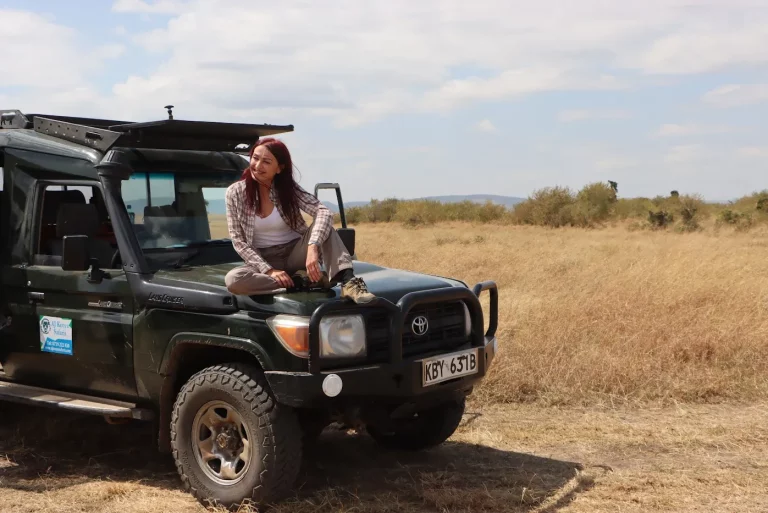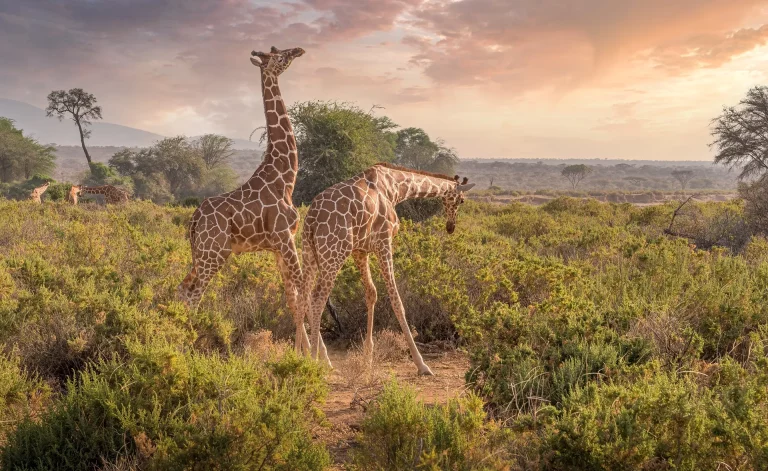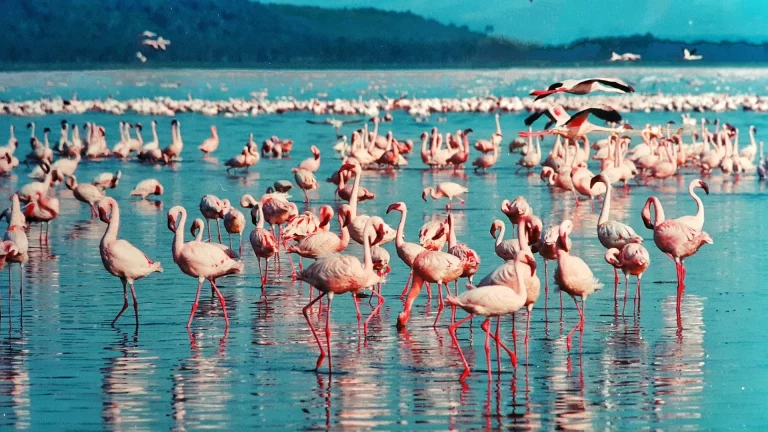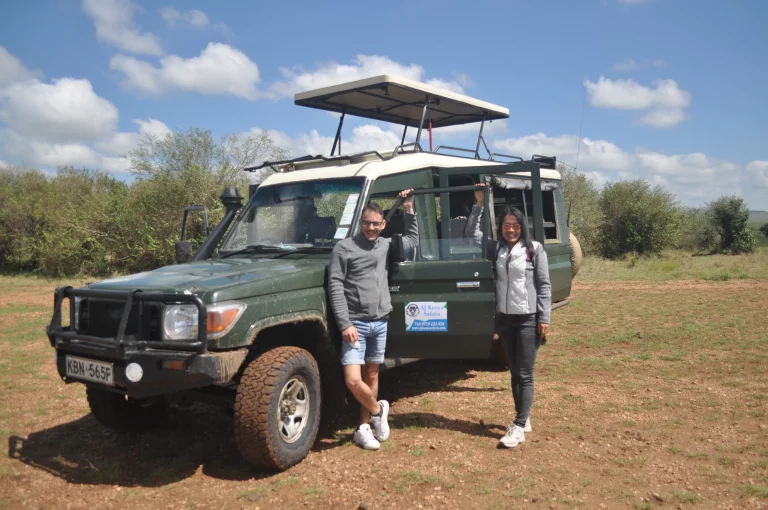What to Wear Safari Kenya: Essential Packing Guide
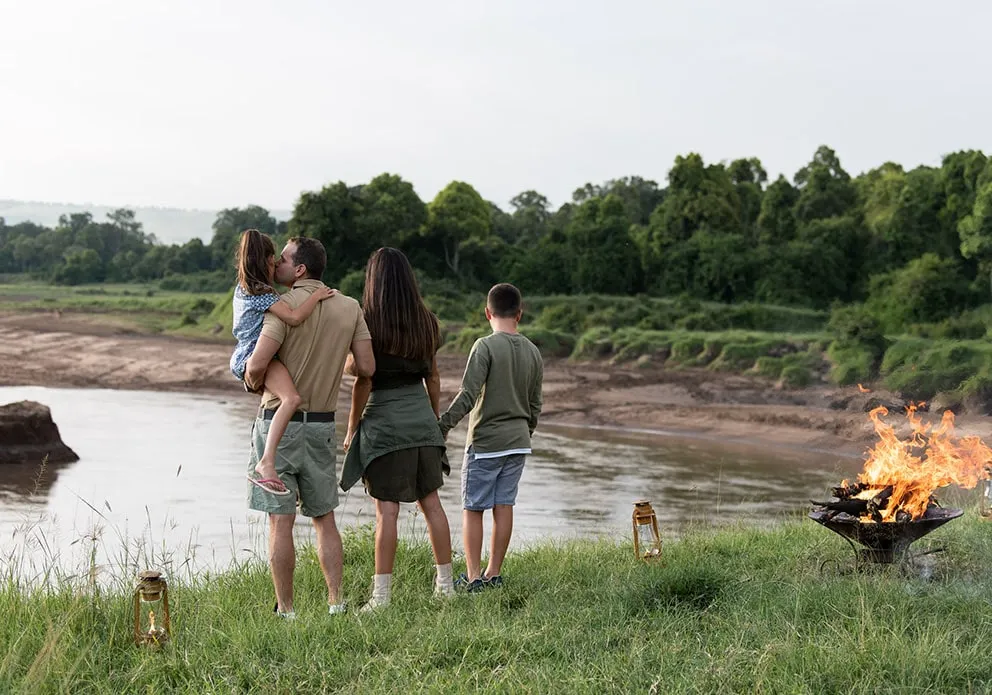
Embarking on a safari in Kenya is a thrilling adventure, one that offers the chance to witness some of the world’s most magnificent wildlife in their natural habitat. However, preparing for such a journey requires careful consideration, particularly when it comes to what to wear.
In this guide, we’ll provide you with all the essential tips and recommendations to ensure you’re dressed appropriately for every aspect of your safari. Whether you’re navigating the dusty plains of the Meru National Park or enjoying a sundowner in Lake Nakuru, our guide will help you stay comfortable, protected, and stylish throughout your African safari in Kenya. .
But before we get into it…
Take a Look at Some of Our Most Booked Kenya Safari Packages

3-Days Safari with a Stay at Jambo Mara Safari Lodge
From £718
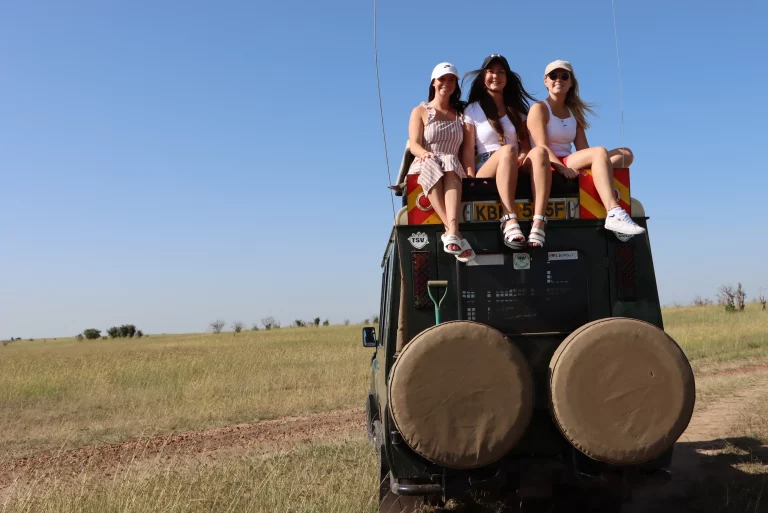
Kenya Itinerary 10 Days. OlPejeta-Samburu-Masai Mara
From £3650
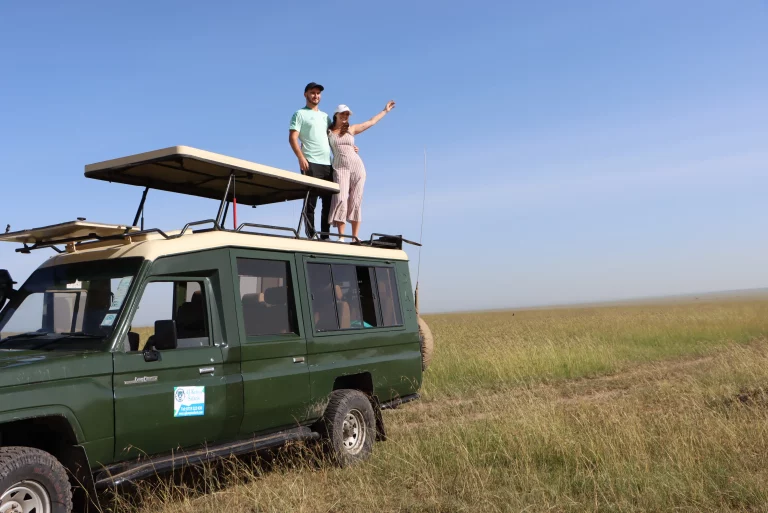
Blissful, 4-Day Keekorok Lodge Masai Mara Safari
From £1024
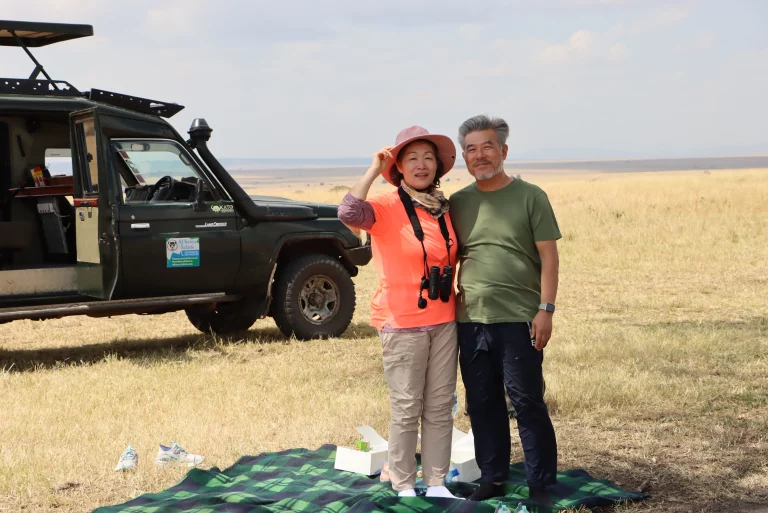
Just the Vacation You Need - 4 Days at Base Camp Masai Mara
From £933
If You Like What You See…Here is How to Reach Us
Call or WhatsApp us at +254-704-532-105 or +254-719-222-430. Or send us an email at safarioffers@kenyaluxurysafari.co.uk, safarioffers@ajkenyasafaris.com, or james@ajkenyasafaris.com
Executive Summary
- For a safari during the dry season, wear lightweight, breathable clothing, and layer with a warm fleece or jacket for chilly mornings and evenings. In the rainy season (March-May, November-December), use moisture-wicking, quick-dry fabrics, and waterproof gear to handle rain and varying temperatures.
- While on a safari, avoid wearing brightly-colored clothes as they may attract insects and scare away wildlife.
- Some equally important items to pack for your safari to Kenya include; insect repellent, sun cream, and travel documents like visas, vaccination certificates, and travel insurance.
- Packing the right safari gear is crucial for comfort and safety during your adventure.
Understanding Kenya Safari Weather
Kenya’s climate is pivotal in defining your safari wardrobe. Here’s a breakdown of different weather seasons and what you should wear during each.
Dry Season: June to October
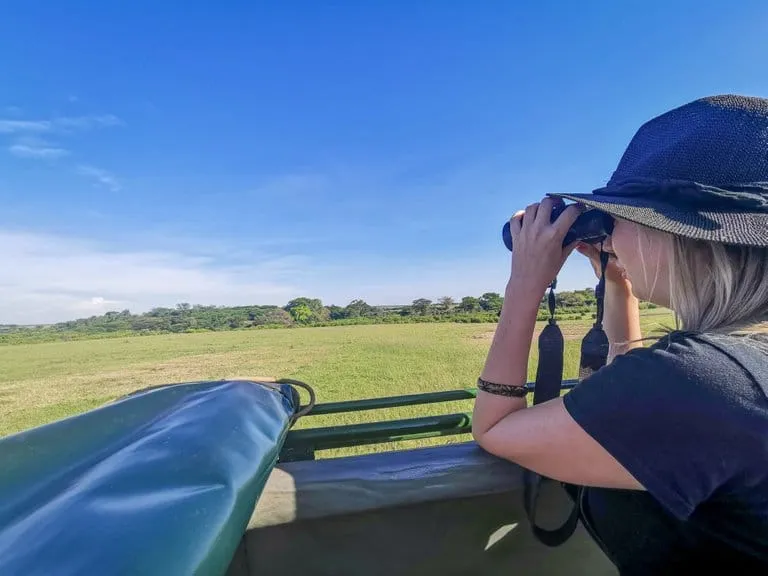
For a safari during Kenya’s dry season, typically from June to October, it’s crucial to dress in lightweight, breathable clothing to stay comfortable amidst the varying temperatures. Early morning and late afternoon can be a bit chilly, with temperatures ranging from 10°C to 15°C (50°F to 59°F), so layering is key; a warm fleece or jacket will keep you cozy during game drives. As the day progresses, temperatures rise significantly, often reaching 25°C to 30°C (77°F to 86°F) or higher by midday, necessitating lightweight shirts and trousers, preferably in neutral tones to blend with the natural environment and deter insects. Additionally, a wide-brimmed hat and sunglasses will protect you from the strong equatorial sun, ensuring a comfortable and enjoyable safari experience.
Rainy Season: March to May & November to December
During the wet season in Kenya, which typically runs from April to June and again in November, temperatures can range from a cool 15°C (59°F) in the mornings and evenings to a mild 25°C (77°F) during the day. Dressing in layers is crucial to adapt to these varying temperatures. Opt for lightweight, breathable fabrics such as moisture-wicking shirts and quick-dry pants that can handle the occasional rain showers.
Waterproof gear, including a durable rain jacket and sturdy, waterproof shoes, is essential to keep you dry and comfortable. Don’t forget a wide-brimmed hat and insect repellent to protect against the elements and pesky mosquitoes. This combination will ensure you are well-prepared to enjoy the rich, lush landscapes and vibrant wildlife that thrive during Kenya’s wet season.
Essential Safari Clothing
The safari dress code is less about fashion and more about practicality. Here’s a run-down of some essential safari clothing.
Tops: Shirts and T-Shirts with Long Sleeves
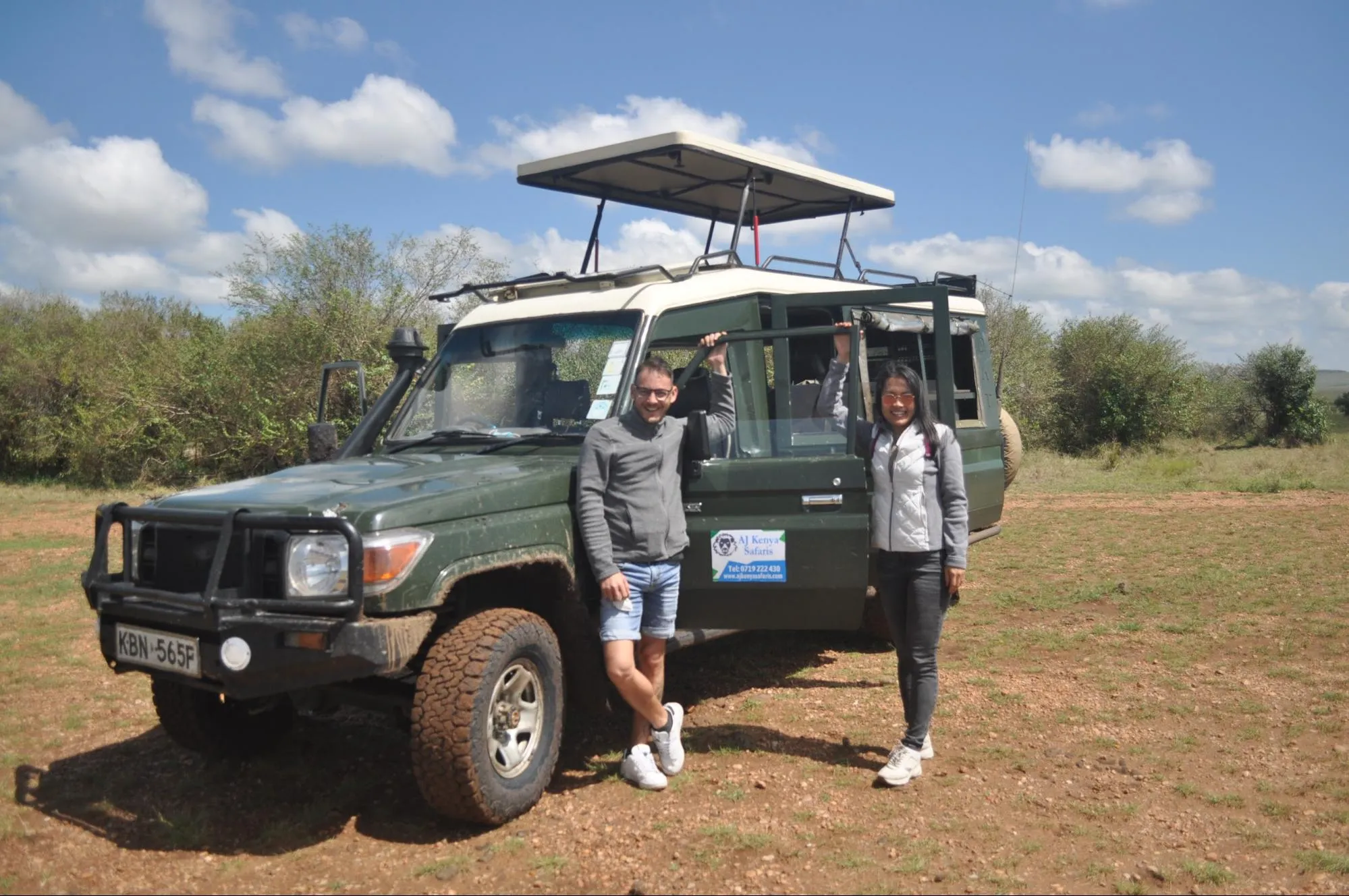
When it comes to tops, versatility is key. Here are some tips for choosing the right tops for your African adventure:
- Long-sleeved shirts crafted from linen or moisture-wicking fabrics offer protection under the scorching hot African sun while keeping you cool during the day’s heat.
- Consider shirts with an SPF rating for added defense against sun exposure.
- Opt for neutral tones like khaki and brown as brightly colored clothes are known to attract tsetse flies
For women, layering a long-sleeved button-up over a tank top or a t-shirt can provide both style and practicality. At the same time, men might appreciate shirts with roll-up sleeve tabs for easy adjustment to temperature changes.
Bottoms: Trousers and Shorts
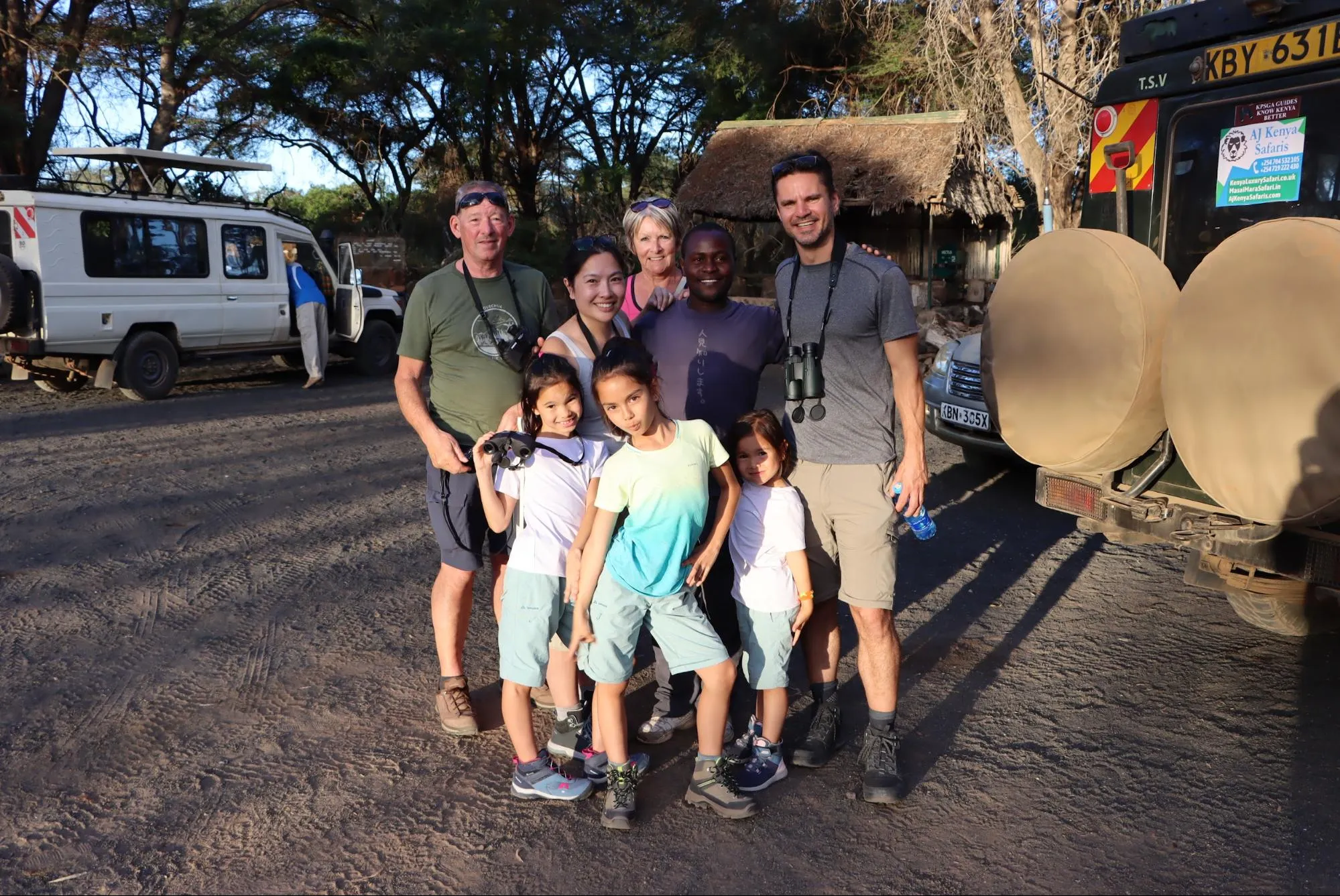
Choosing the right bottoms is crucial as you anticipate the day’s safari adventures. Trousers and shorts in neutral colors such as tan and green provide comfort and ease of movement. The fabric choice is equally important—opt for materials like cotton or rayon for breathability.
For chilly mornings or when the sun dips below the horizon, trousers are your best friend. And when the Kenyan sun reigns supreme, shorts paired with a lightweight long-sleeved shirt strike the perfect balance between comfort and protection.
Outerwear: Jackets and Fleeces
The African chill of early mornings and evenings on safari calls for a warm layer. A soft, squashable fleece or jacket is perfect for these moments, providing warmth without the bulk. And when the African skies decide to surprise you with a rain shower, a waterproof jacket becomes an indispensable ally. Don’t forget to pack a hot water bottle for comfort during those chilly nights.
Remember, the key here is layering—clothes you can easily add or remove as the day unfolds from dawn till dusk.
Footwear for Safari
The right footwear can mean the difference between a day spent in blissful exploration or one marred by discomfort. Whether you’re trekking through the bush, standing in the back of a game drive vehicle, or sauntering back to your luxury lodge, your feet deserve the best.
Lace-up boots, trainers, and even flip-flops each have their place in your luggage, offering versatility for the diverse activities and terrains you will encounter on your Kenyan safari. Additionally, wearing safari boots provides excellent protection and comfort, ensuring your feet are well-supported throughout your adventure.
Hiking Boots
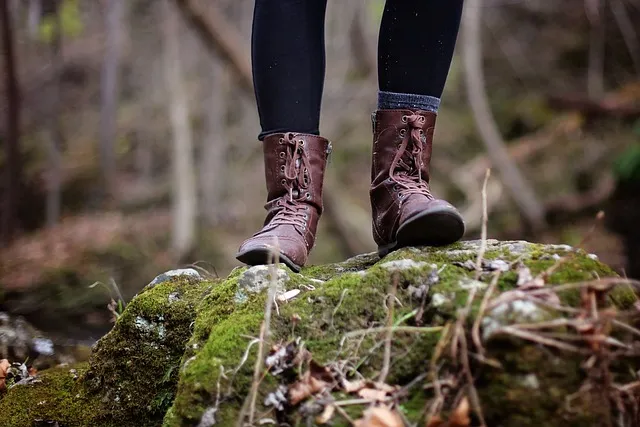
A sturdy pair of hiking boots is your most loyal companion for walking safaris. They’ll keep your feet dry during river crossings, provide support across uneven ground, and offer protection against the elements.
Opt for waterproof and durable boots with good ankle support, and consider classic safari boots for their all-around practicality. With the right pair strapped on, every step brings you closer to the heart of the Kenyan wilderness.
Sneakers and Trainers
When your safari itinerary includes game drives and casual walks, sneakers or trainers are your go-to. Their lightweight design and breathable fabric make them ideal for long periods in a vehicle, while a good grip ensures safety during those short bush walks.
For those who prefer a shoe that can transition from day to night, lightweight hiking shoes are functional for outdoor activities and for evening relaxation at the lodge.
Sandals and Flip Flops
As the day’s heat gives way to a more gentle warmth, sandals and flip-flops become the footwear of choice. Perfect for navigating around the lodge or taking a leisurely stroll through a local village, they offer a chance for your feet to breathe and relax.
Hybrid sandals, especially those designed for water activities, are an excellent choice for versatility and comfort during those laid-back moments of your safari experience.
Accessories and Gear
Beyond the safari clothes themselves, your Kenya packing list isn’t complete without a few key accessories and pieces of gear. These extras enhance your comfort, protect you from the elements, and add a touch of personal style to your safari look.
Wide Brim Hat
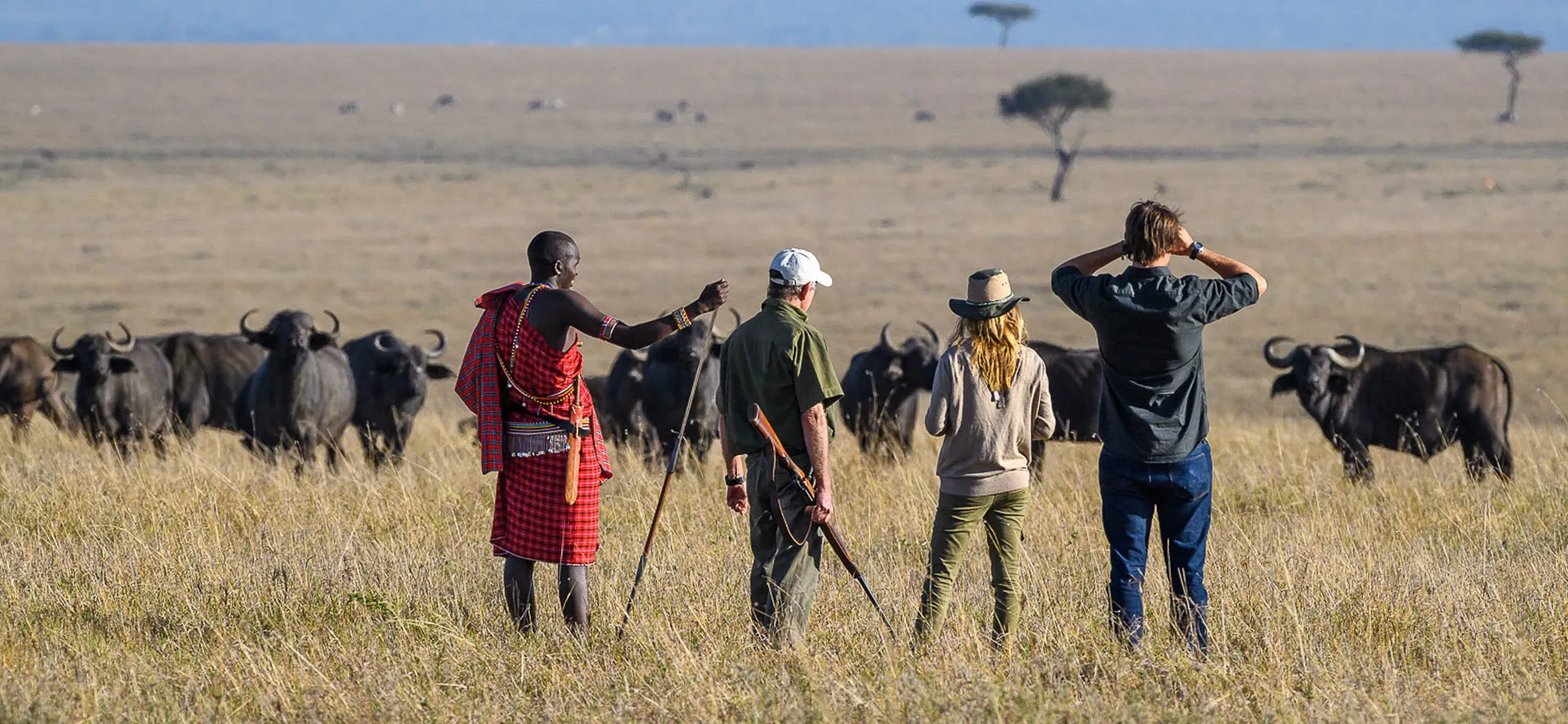
A wide-brim hat is more than a fashion statement; it’s a shield against the relentless African sun. With a tie under the chin to keep it secure, this accessory is non-negotiable for sun protection. Choose one that complements your safari clothes, and you’ll not only look the part but also stay safe from the harsh rays that can lead to sunburn and heatstroke.
Sunglasses and a Nice Scarf
Protecting your eyes from intense sun exposure is where a good pair of sunglasses comes in handy. But don’t overlook the versatility of a scarf or buff, which can protect against the dust kicked up by animals or vehicles.
Day Pack and Camera Bag
Every safari-goer needs a trusty day pack—a small, lightweight backpack that carries all your daily essentials. Equally important is a padded camera bag to keep your photography gear safe from bumps and scratches. With the right camera equipment, you can capture high-quality images that will serve as precious memories of your Kenyan adventure.
Packing Tips for Women
Ladies setting off on a Kenyan safari, take note: while the adventure beckons, practicality reigns supreme. From the right trousers or shorts for daytime exploration to the versatile safari dress for evening relaxation, your choices should be as functional as they are fashionable. A safari dress offers both comfort and style, making it an excellent choice for various activities. And let’s not forget the essentials—like a sturdy sports bra for those bumpy game drives and extra underwear, considering the cultural taboos surrounding laundry services at the lodges.
Let’s dive into the specifics.
Sports Bra and Comfortable Undergarments
A quality bra is a non-negotiable item in your safari wardrobe. With the terrain often rough and the drives bumpy, the added support is not just about comfort; it’s about enjoying the day without distraction.
It’s also wise to pack a few extra pairs of underwear. Due to cultural norms, laundry services in the bush may not extend to these personal items, so it’s best to come prepared. Think about practicality, comfort, and a touch of adventure when selecting these undergarments for your safari experience.
Versatile Dresses and Skirts
For those occasions when you’re not tracking lions or gazing at giraffes, a dress or skirt can be the perfect garment for lounging by the lodge or dining under the stars. Choose lightweight, breathable fabrics and styles that respect the local customs—long enough for coverage but loose enough to keep you cool.
Remember, layering is your friend for those cooler moments, and neutral colours will keep the focus on the environment rather than your outfit.
Packing Tips for Men
Gentlemen, your safari packing guide is all about simplicity and adaptability. The African bush doesn’t require a fashion show, but it does demand clothing that can handle the rigors of the outdoors. Lightweight and breathable neutral-toned fabrics are your best bet for staying cool and blending in with the natural environment.
A safari shirt is also practical, offering comfort and protection from the elements. And when it comes to versatility, zip-off pants are a game-changer. Let’s explore how to combine comfort and practicality in your safari attire.
Zip-Off Pants and Breathable Shirts
Zip-off pants offer the flexibility to switch between pants and shorts as the temperature demands. Paired with breathable shirts, they keep you comfortable during even the hottest hours of the day.
These pieces are not just about adjusting to the climate; they’re about being prepared for every moment of adventure a Kenyan safari offers.
Evening Wear
When the sun dips and the evening cool settles in, men’s evening wear on safari strikes a balance between casual and appropriate. The dress code at luxury safari lodges leans towards comfort with a touch of elegance. Think clean, neutral-toned trousers and a fresh long-sleeved shirt—clothing that says you’re ready to relax by the fire and share stories of the day’s sightings.
Remember, the focus is on experiencing the African night, not on standing out, so keep it simple and comfortable.
Additional Items to Pack
Your safari packing list should extend beyond clothing to include those indispensable items that will make your Kenya safari smoother and more enjoyable. From staying hydrated with a trusty water bottle to keeping charged with a power bank, the additional items you pack can greatly enhance your experience.
Insect Repellent and Sunscreen
In the bush, two of your biggest adversaries will be the sun and insects. A dual-purpose sun cream that includes insect repellent is a game-changer, offering protection from the sun’s rays while keeping pesky mosquitoes at bay. Choose an eco-friendly option to ensure you’re safeguarding your skin and respecting the delicate environments you’re exploring.
Malaria Medication and First Aid Kit
Health precautions are a non-negotiable aspect of your safari preparations. Consult with a healthcare provider well in advance to secure the necessary malaria medication. Additionally, a well-stocked first aid kit with essentials like Band-Aids, antibiotic cream, and medications for common ailments will give you peace of mind.
While tsetse flies can be a nuisance, knowing how to manage their bites can alleviate discomfort. It’s always better to be over-prepared when it comes to health and safety in remote safari destinations.
Travel Documents and Insurance
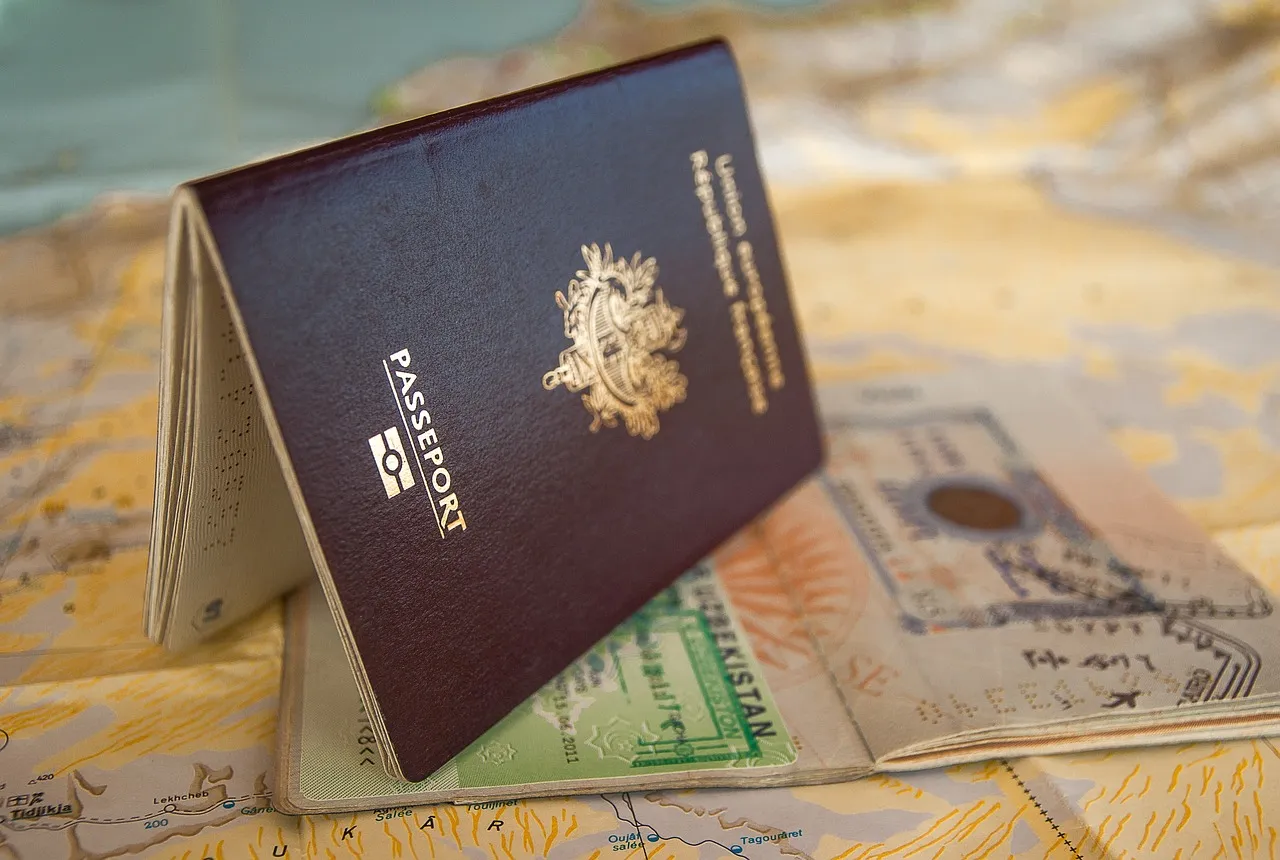
The less glamorous but utterly essential part of your safari checklist revolves around paperwork. Ensure that all important documents, including visas, vaccination certificates, and insurance policies, are in order. It’s wise to carry copies separate from the originals in case of loss or theft.
Your travel insurance should cover medical emergencies and evacuation, offering a safety net that allows you to immerse yourself in the safari experience without worry. Double-check your documents before departure to avoid any hitches on your African adventure.
What Not to Pack for Safari
Knowing what to pack is as important as knowing what to leave behind. Your safari in Kenya should be unencumbered by unnecessary items that either take up precious space or are not permitted. From avoiding certain colors that attract unwanted insect attention to respecting local laws regarding certain items, your packing decisions should be informed and intentional.
Let’s explore what you should definitely not include in your luggage as you prepare for your African escapade.
Bright Colors and Camouflage
Step into the wild with a wardrobe that doesn’t scream for attention. Bright colors and camouflage are two sartorial choices you’ll want to skip. The former can be distracting and impractical in the bush, while the latter is often associated with military attire and can cause confusion or legal issues.
Stick to neutral or dark colors to enhance your game-viewing experience, and leave the flashy outfits for another occasion. After all, it’s best to blend in in the animal kingdom.
Plastic Bags
As you pack for Kenya, remember that plastic bags are a no-go. Not only are they harmful to the environment, but they’re also illegal in Kenya, as the country takes a strong stance on conservation. Opt for reusable bags or packing cubes instead, which are better for the environment and will keep your belongings organized.
It’s a simple swap that speaks volumes about your commitment to preserving the natural beauty of Africa for future generations to enjoy.
Laundry Services and Packing Light
One of the secrets to a successful safari is packing light. With most safari flights having strict weight limits, it’s important to consider what you really need. Fortunately, most lodges offer laundry services, allowing you to wear the same items multiple times. By packing fewer clothes and utilizing services available at the lodges, you can keep your luggage within the weight limit and make your travel between safari destinations much easier.
Let’s look at how you can maximize the laundry services provided and use packing cubes to streamline your packing process.
Same Day Laundry Service
The convenience of same-day laundry service at upscale lodges cannot be overstated. This amenity allows you to:
- Freshen up your safari clothes regularly
- Reduce the need to overpack
- Travel with just a few key pieces
- Be confident that you’ll have clean attire each day of your adventure
Embracing this service means you can travel light and still have clean clothes throughout your trip.
It’s a thoughtful feature that adds a touch of luxury to your safari experience and helps keep your focus on the wonders of Kenya rather than the contents of your suitcase.
Using Packing Cubes
In the world of travel, especially on safari, the order is paramount. Packing cubes are the unsung heroes that transform a chaotic duffel bag into an organized portable closet. These handy compartments allow you to categorize your clothing and quickly find what you need without rummaging through your entire bag.
By using packing cubes, you’re not only keeping your luggage tidy but also saving space, which is crucial when adhering to safari flight weight restrictions. It’s a simple packing hack that will make your safari experience all the more enjoyable.
Summary
Remember, the key to a great safari experience is preparation—choosing the right clothing for the climate, packing essential gear for convenience and safety, and knowing what to leave behind. Embrace the spirit of safari with attire that’s comfortable, functional, and respectful of the environment.
Whether you’re traversing the Masai Mara or lounging at a luxury lodge, let your journey be defined by the sights and sounds of Kenya, not by what’s in your suitcase. Go forth and create memories that will last a lifetime, and let the adventure begin!
Frequently Asked Questions
In this section, we answer some of your most frequently asked questions.
What’s the best time of year to go on a Kenyan safari?
The best time for a Kenyan safari is during the dry season from June to October when you can have prime wildlife viewing opportunities due to animals gathering around water sources and less dense vegetation.
Are there specific colors I should avoid wearing on a game drive?
To stay safe and respectful, avoid wearing bright colors and camouflage on safari. Stick to neutral colors like khaki, beige, and green for a better experience.
Do I need to pack a different outfit for each day of my safari?
No need to pack a different outfit for each day of your safari. Many lodges offer same-day laundry services, allowing you to pack minimally and re-wear clothes. Enjoy your trip!
Can I wear sandals or flip-flops on a safari?
No, it’s not recommended. Opt for sturdier footwear like hiking boots or sneakers for better protection and comfort on game drives and walking safaris.
Should I bring a first aid kit on my safari trip?
Yes, it’s a good idea to bring a basic first aid kit with items like Band-Aids, antibiotic cream, pain relievers, and medication for digestive issues. Don’t forget to consult with your doctor about malaria medication before your trip.

